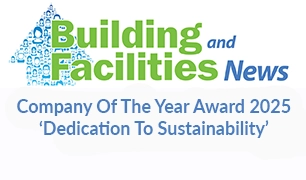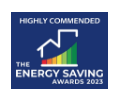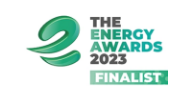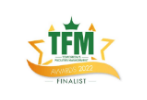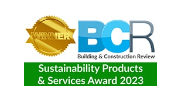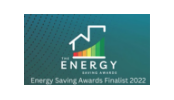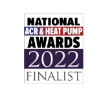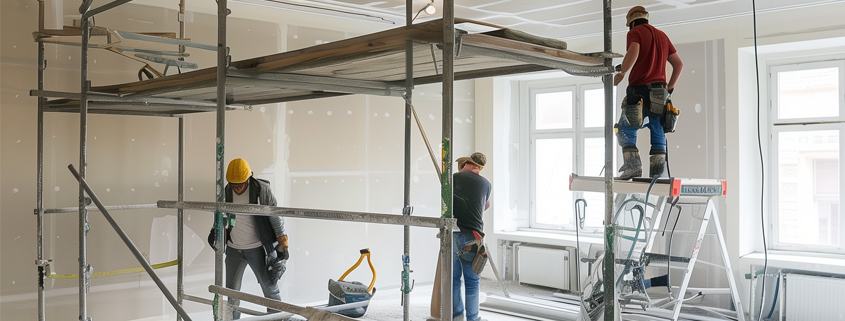
Learning The Three Rs of Net Zero
The transition to a net zero carbon future necessitates a multi-pronged approach across various sectors. In the commercial built environment, understanding the challenges and advantages of tackling three key areas stand out: retrofit, renewables, and sustainable refrigerants. These are the three Rs of net zero that need to be learned if we are to successfully decarbonise the built environment in the UK.
In this first part, we turn our attention to Retrofit…
Three Rs Part 1 -Retrofit: Breathing New Life into Existing Structures
The built environment accounts for a significant portion of global greenhouse gas emissions. Existing buildings, with their inherent energy inefficiencies, pose a substantial challenge. Retrofit, the process of upgrading existing buildings to improve energy performance, is therefore crucial and so our first of the Three Rs of net zero.
In terms of attaining net zero this represents, and needs to be recognised as, one of the largest challenges. According to statistics released by the Department for Business, Energy, & Industry Strategy (BEIS) there were 1,755,000, recognised non-domestic buildings in England and Wales at the end of March 2024, accountable for 23% of the UK built environment’s operational emissions.
Much emphasis has been placed on improving building regulations so that new-build support more sustainable construction and operation, but the reality is that new non-domestic construction, having peaked at 22,000 new properties in 1985 has gradually declined to less than 2,000 annually by the end of 2023. Non-domestic building stock between 2012 and 2023 did average 7,000 buildings per year, but this annual rate has been impacted by economic and other events, with a substantial fall in construction seen around the 1990 and 2008 recessions and during the COVID-19 pandemic in 2020 and 2021 (with successive annual falls of in the number of non-domestic buildings of 14% and 28%). This has consequently driven up the percentage of pre-existing properties in the UK which include shops, offices, factories and warehouses, hospitality, arts and leisure, health, education and emergency services which account for 1.6 million recorded non-domestic buildings. Of these, just 14.6% were constructed after 1996, and considering the rates of new construction it is easy to see why the UK Green Building Council (UKGBC) estimates that 80% of buildings that exist today will still be here in 2050. Many of these buildings will have been constructed to lower energy efficiency standards meaning the large majority require some or considerable retrofit over the next 25 years if improved performance for sustainable operation is to be achieved.
The positives of retrofit should also help to outweigh the capital investment. Under retrofit, buildings should consume less energy, leading to lower operating costs and reduced carbon emissions. Such work can also deliver enhanced insulation and ventilation, improving indoor air quality, benefiting occupant health and well-being. And, energy-efficient buildings are generally more attractive to tenants and buyers, increasing property values.
Retrofit will typically incorporate enhancements to insulation to minimise heat loss in winter and heat gain in summer, and replacement of glazing to significantly heat transfer, reducing energy demand for heating and cooling. This will go hand-in-hand with the installation of new high-efficiency HVAC Systems. Retrofit of space heating can be a complex and expensive function of retrofit as it can demand replacement of pipework and heat emitters alongside new plant. Domestic Hot Water (DHW) systems are far quicker and easier to replace, despite the inherent complexity of the system, because basic alterations will occur within the plant room. More advanced retrofit which could include heat pumps or solar thermal will require external work to the building, but this again is less invasive than other options. Building automation systems deploying smart thermostats and controls enhance these new appliances allowing for optimised energy use and reduced waste.
Chief amongst the goals of retrofit moving forward is, and will increasingly be, the integration of renewable energy. This sees a shift to greater consumption of grid electricity as fossil fuel dependence is reduced. But truly sustainable retrofit will require the incorporation of on-site renewable energy sources like solar and to some extent heat pumps (as these still require electrical energy to operate) to further reduce reliance on the grid.
In Part 2 we will take a closer look the second of our Three Rs, renewables…

